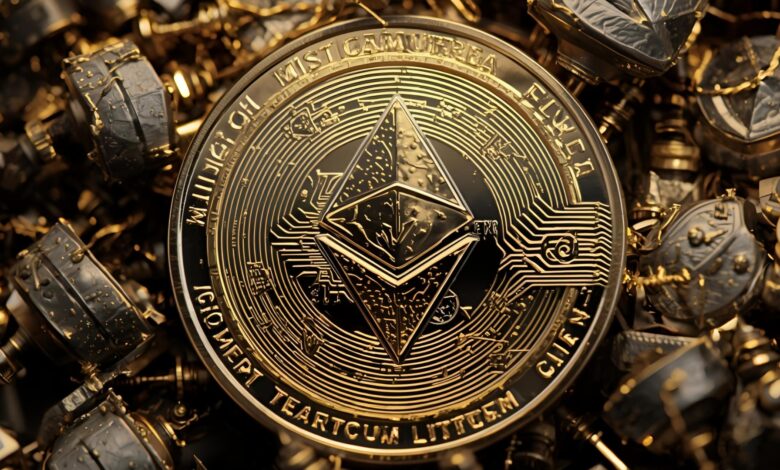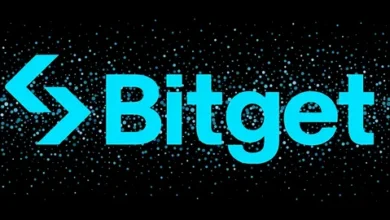
Ethereum Price Could Hit $5,000 by 2026 Trader Predictions
Ethereum have caught the attention of both seasoned investors and newcomers alike. According to a growing chorus of crypto traders and market analysts, Ethereum could potentially surge past the $5,000 mark by 2026, representing a significant milestone for the world’s second-largest cryptocurrency by market capitalization.
This optimistic outlook comes at a time when the broader blockchain ecosystem is experiencing unprecedented growth, with institutional adoption accelerating and technological innovations reshaping how we perceive digital assets. As Ethereum continues to evolve through its various network upgrades and establishes itself as the backbone of decentralized finance (DeFi) and non-fungible tokens (NFTs), the question isn’t necessarily whether ETH can reach $5,000, but rather what catalysts will propel it to these heights and what challenges might stand in its way.
The factors behind these bullish predictions requires a comprehensive examination of Ethereum’s current market position, technological advancements, and the broader macroeconomic landscape that influences cryptocurrency valuations. Let’s dive deep into why traders believe this ambitious price target is not just possible but increasingly probable.
The Current State of Ethereum’s Market Position
Ethereum has undergone a remarkable transformation since its inception in 2015. Today, it stands as the premier platform for smart contracts and decentralized applications, commanding a dominant position in the blockchain space. The network’s transition to a proof-of-stake consensus mechanism through The Merge in September 2022 marked a watershed moment that significantly altered its economic model and environmental footprint.
Currently trading well below the $5,000 threshold, Ethereum has demonstrated remarkable resilience despite facing intense competition from alternative Layer 1 blockchains like Solana, Cardano, and emerging networks. The platform’s total value locked in DeFi protocols remains substantial, indicating sustained user engagement and trust in the ecosystem. This foundational strength provides a solid baseline from which future growth can emerge.
What makes Ethereum particularly compelling is its network effect. With thousands of developers building on the platform and millions of users interacting with Ethereum-based applications daily, the ecosystem has achieved a critical mass that’s difficult for competitors to replicate. This established infrastructure creates a powerful moat that supports long-term price appreciation potential.
Technological Upgrades Driving Bullish Sentiment
The roadmap for Ethereum’s continued development plays a crucial role in shaping trader expectations. The implementation of Ethereum Improvement Proposals (EIPs) has systematically addressed scalability concerns and enhanced network efficiency. These technological enhancements aren’t merely incremental improvements; they represent fundamental shifts in how the network operates.
Layer 2 scaling solutions have emerged as game-changers for Ethereum’s capacity to handle transactions. Networks like Arbitrum, Optimism, and Polygon are processing millions of transactions at a fraction of the cost of the main Ethereum chain. This multi-layered approach to scaling allows Ethereum to maintain its security and decentralization while dramatically improving throughput and reducing fees for end-users.
The upcoming implementations focused on sharding and further optimization of the Ethereum Virtual Machine (EVM) promise to unlock even greater capabilities. These technical improvements directly translate to better user experiences, lower transaction costs, and increased adoption—all factors that historically correlate with price appreciation in cryptocurrency markets.
Institutional Adoption and Mainstream Recognition
Perhaps one of the most significant factors underpinning the $5,000 price prediction is the accelerating pace of institutional investment in Ethereum. Major financial institutions, hedge funds, and corporations have increasingly recognized Ethereum not just as a speculative asset but as a foundational technology with real-world utility and transformative potential.
The approval and launch of spot Ethereum ETFs in various jurisdictions has opened the floodgates for traditional investors who were previously hesitant to navigate the complexities of cryptocurrency exchanges and self-custody solutions. These regulated investment vehicles provide a familiar and comfortable entry point for institutional capital, potentially channeling billions of dollars into Ethereum exposure.
Furthermore, enterprise adoption of Ethereum technology continues to expand across diverse sectors. From supply chain management to digital identity verification, companies are discovering practical applications for blockchain technology that leverage Ethereum’s robust infrastructure. This real-world utility creates intrinsic value beyond speculation, supporting sustainable long-term price growth.
DeFi and NFT Ecosystem Growth

The explosive growth of decentralized finance represents one of Ethereum’s most compelling use cases. DeFi protocols built on Ethereum have revolutionized how people access financial services, offering lending, borrowing, trading, and yield generation opportunities without traditional intermediaries. The total value locked in DeFi applications, though fluctuating with market conditions, represents hundreds of billions of dollars in economic activity.
As regulatory clarity improves and user interfaces become more intuitive, DeFi is poised for mainstream adoption. This expansion directly benefits Ethereum, as the network captures transaction fees and experiences increased demand for ETH as collateral and gas fees. The symbiotic relationship between DeFi’s success and Ethereum’s value proposition creates a powerful feedback loop that supports bullish price predictions.
Similarly, the NFT market, despite experiencing cyclical booms and corrections, has demonstrated staying power beyond initial hype. Ethereum remains the dominant platform for NFT marketplaces, with high-value collections and innovative projects choosing the network for its security and liquidity. As digital ownership concepts mature and find applications in gaming, entertainment, and intellectual property, Ethereum stands to benefit significantly from this evolving landscape.
Macroeconomic Factors and Market Cycles
Ethereum’s potential path to $5,000 requires consideration of broader macroeconomic conditions. Cryptocurrency markets have historically exhibited cyclical behavior, often correlated with global liquidity conditions, interest rate policies, and investor risk appetite. The timeline to 2026 encompasses potential shifts in monetary policy that could favor alternative assets like cryptocurrencies.
Should central banks ease restrictive policies or concerns about fiat currency devaluation intensify, investors may increasingly seek refuge in scarce digital assets. Ethereum’s transition to proof-of-stake has made it inherently deflationary under certain network conditions, creating a scarcity dynamic that could drive appreciation as demand increases relative to supply.
Additionally, the maturation of cryptocurrency regulations worldwide, while initially viewed with trepidation by some market participants, ultimately provides legitimacy and reduces uncertainty. Clear regulatory frameworks enable institutional participation and protect retail investors, fostering a healthier market environment conducive to sustained growth rather than speculative bubbles.
Technical Analysis and Historical Patterns
From a technical analysis perspective, Ethereum has demonstrated patterns that align with the possibility of reaching $5,000 by 2026. Historical price action shows that Ethereum tends to follow Bitcoin’s market cycles while often experiencing more pronounced percentage gains during bull markets due to its lower market capitalization relative to Bitcoin.
Fibonacci retracement levels, support and resistance zones, and on-chain metrics all provide data points that traders use to formulate their predictions. Metrics such as active addresses, transaction volume, and the amount of ETH staked on the network offer insights into fundamental demand and network health beyond simple price action.
Notably, Ethereum previously touched approximately $4,800 during the 2021 bull market before the broader crypto market correction. Reaching $5,000 would represent merely a modest appreciation from those previous highs, suggesting this target is conservative rather than wildly optimistic when considering potential growth over a multi-year timeframe.
Challenges and Risks to Consider
While the bullish case for Ethereum reaching $5,000 is compelling, prudent analysis requires acknowledging potential obstacles. Regulatory uncertainty remains a persistent concern, particularly regarding how authorities might classify and regulate staking activities or DeFi protocols. Adverse regulatory developments could temporarily dampen market enthusiasm and delay price appreciation.
Competition from alternative blockchain platforms continues to intensify. Networks offering faster transaction speeds or lower fees occasionally capture market share and developer attention, potentially eroding Ethereum’s dominance. However, Ethereum’s first-mover advantage and extensive ecosystem create significant barriers to wholesale migration.
Market volatility represents another consideration. Cryptocurrency markets are notoriously unpredictable, susceptible to dramatic swings based on sentiment, news events, or macroeconomic shocks. The path to $5,000 is unlikely to be linear, with substantial corrections and consolidation periods probable along the way.
The Timeline and Realistic Expectations
The 2026 timeframe for Ethereum to reach $5,000 provides a reasonable window for the convergence of multiple positive catalysts. This timeline allows for continued technological development, gradual institutional adoption, potential favorable shifts in macroeconomic conditions, and the natural progression of cryptocurrency market cycles.
Experienced traders emphasize that this prediction represents a potential outcome rather than a guarantee. Crypto trading requires acknowledging uncertainty and preparing for various scenarios. The $5,000 target should be viewed as a data-informed estimate based on current trends rather than an inevitable destination.
For investors considering positions in Ethereum based on these predictions, dollar-cost averaging and risk management remain essential strategies. The cryptocurrency market’s volatility demands disciplined approaches that protect capital during downturns while maintaining exposure to potential upside.
Also Read: Ethereum Launch Date and Price Complete History & Analysis
Conclusion
The prediction that Ethereum could smash through the $5,000 barrier by 2026. Reflects more than mere speculation—it represents a carefully considered assessment of technological progress, adoption trends, and market dynamics. The combination of Ethereum’s technological advantages, growing institutional interest, thriving DeFi and NFT ecosystems, and favorable long-term macroeconomic possibilities creates a compelling case for significant price appreciation.
However, the journey to $5,000 will likely be marked by volatility, challenges, and periods of uncertainty. Ethereum’s success depends on continued execution of its technical roadmap. Sustained developer and user engagement, and navigating an evolving regulatory landscape. While the $5,000 target is ambitious, it’s grounded in fundamental analysis rather than pure optimism.
For investors and enthusiasts watching Ethereum’s evolution, the coming years promise to be fascinating. Whether the network reaches $5,000 or exceeds expectations depends on countless variables. But one thing remains clear: Ethereum’s role as a foundational infrastructure for the decentralized. Web positions it uniquely for the future of finance and digital interaction.
Frequently Asked Questions
1. What factors could prevent Ethereum from reaching $5,000 by 2026?
Several factors could impede Ethereum’s path to $5,000, including adverse regulatory developments. Increased competition from alternative blockchain platforms, prolonged macroeconomic headwinds, or technical issues within the network. Market sentiment can shift rapidly in cryptocurrency markets, and unforeseen black swan events could trigger extended bear markets. Additionally, if Ethereum fails to deliver on its technological roadmap or experiences security vulnerabilities, investor confidence could erode. Limiting price appreciation regardless of other positive factors.
2. How does Ethereum’s proof-of-stake transition affect its price potential?
The transition to proof-of-stake fundamentally changed Ethereum’s economic model by reducing. The rate of new ETH issuance and introducing mechanisms that can make the network deflationary. When transaction activity is high, more ETH is burned through EIP-1559 than is created through staking rewards, reducing overall supply. This scarcity dynamic, combined with the approximately 15% of total ETH supply locked in staking contracts. Creates favorable supply-demand conditions that support long-term price appreciation and make higher valuations more achievable.
3. Should I invest in Ethereum based on these price predictions?
Investment decisions should be based on your personal financial situation, risk tolerance, and thorough research rather than predictions alone. Cryptocurrency investments are highly volatile and speculative, with the potential for significant losses. If you’re considering investing in Ethereum, start with amounts you can afford to lose. Diversify your portfolio, and consider consulting with financial advisors. Price predictions provide interesting perspectives but should never be the sole basis for investment decisions. As the cryptocurrency market remains unpredictable despite analytical frameworks.
4. How does Ethereum compare to Bitcoin regarding investment potential?
Ethereum and Bitcoin serve different purposes within the cryptocurrency ecosystem. Bitcoin primarily functions as a store of value and digital gold. While Ethereum acts as a platform for decentralized applications and smart contracts. Ethereum typically exhibits higher volatility and potentially higher returns but with correspondingly greater risk. Bitcoin’s larger market capitalization and longer track record provide different security characteristics. Many investors hold both assets as complementary components of a diversified cryptocurrency portfolio rather than choosing one exclusively.
5. What role do Layer 2 solutions play in Ethereum’s price trajectory?
Layer 2 solutions are critical to Ethereum’s ability to scale and remain competitive with alternative blockchains. By processing transactions off the main Ethereum chain. While maintaining security guarantees, Layer 2 networks dramatically reduce fees and increase throughput. This improved user experience encourages adoption and enables use cases that would be economically unfeasible on the main chain. As Layer 2 adoption grows, it increases overall Ethereum ecosystem activity, drives demand for ETH, and strengthens. The network’s value proposition, all contributing positively to long-term price potential.







